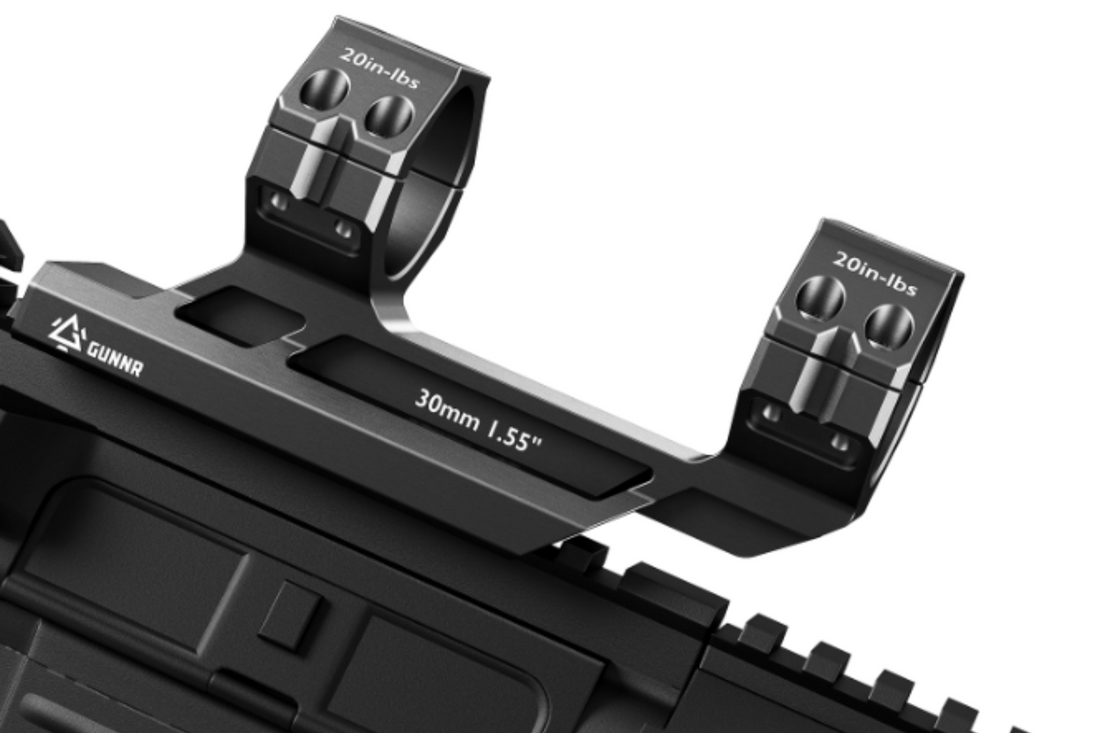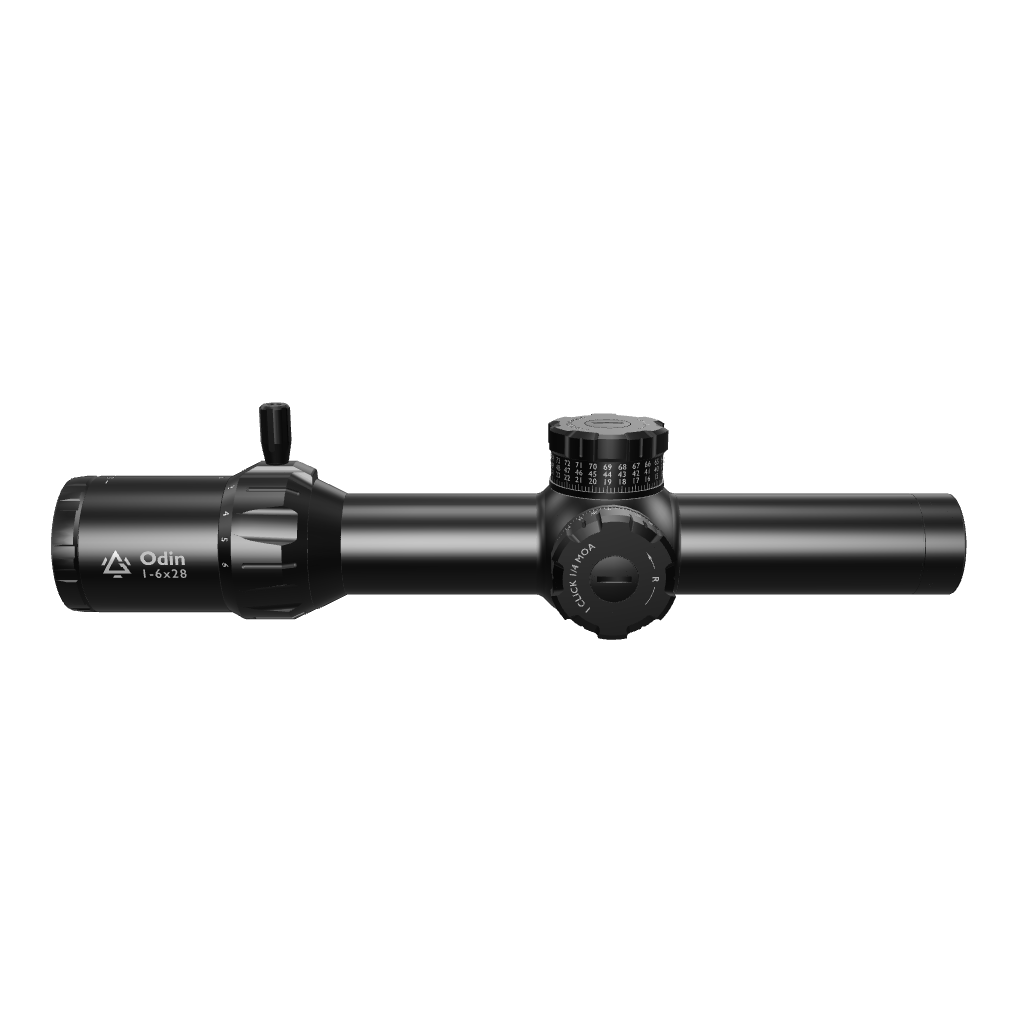Cantilever Mounts vs. Scope Rings: Choosing the Mount for Your Optic
If you ever have to choose between a cantilever mount and scope rings, remember this: it mostly depends on the rail space on your rifle and how much eye relief you would like.
- If you have an AR-style rifle with limited rail space, a cantilever mount is ideal. It allows you to push the scope forward to achieve better eye relief.
- If you have a bolt-action rifle (or any setup that provides sufficient rail space), scope rings are ideal because you don't need the extra forward offset.
So, it mostly comes down to rail space and eye relief.
But that is not all.
The choice between cantilever mounts and scope rings affects your comfort, sight picture, and how well your optic holds zero. There are many more factors to consider.
In this guide, we'll walk you through everything you need to know about cantilever mounts vs. scope rings, with clear explanations, comparisons, and real-world guidance to help you decide.
Cantilever Mounts vs Scope Rings: Differences
Cantilever mounts and scope rings differ mainly in how they attach to the rifle and how they position the scope.
- Compared to traditional scope rings, a cantilever mount generally positions the scope about 1.5 to 2.5 inches further forward. Scope rings, on the other hand, usually mount the scope directly over the upper receiver and do not provide any forward offset.
- A cantilever mount is typically mounted onto a Picatinny rail, and not all rifles have those. Scope rings generally do not need any extra mounting gear. They consist of two separate rings that clamp the scope onto the rifle.
Some extended Cantilever mount models can push the scope out even further, up to 3 inches (depending on the design).
On most rifles, especially AR-style rifles like the AR-15, a cantilever mount would extend the scope forward over the handguard, or at least beyond the upper receiver.
| Feature | Cantilever Mount | Scope Rings |
| Definition | A one-piece mount that extends forward from its mounting point. | A set of two separate circular clamps that secure the scope to the rail. |
| Common Use | Perfect for AR-15s and flat-top rifles. | Traditional choice for bolt-action and precision rifles. |
| Design | Integrates the base and rings into a single unit with a forward offset. | Allows independent placement of the front and rear rings for flexibility. |
Here is a simple way to understand the differences between cantilever mounts and scope rings:
- Cantilever mounts project the optic forward, solving issues with eye relief and rail space.
- Scope rings, on the other hand, offer a minimalist, classic solution that works well when you have a full-length rail or traditional receiver.
Related: How to set eye relief
Cantilever Mounts vs Scope Rings: Pros and Cons
Cantilever Scopes Pros and Cons
Pros
- Better for eye relief because they provide 1.5–3 inches of forward offset
- Great for AR-style rifles, which are popular but have limited rail space
- They typically come in a one-piece design that ensures solid alignment and mounting stability
- They are also easy to install: fewer moving parts and alignment issues
- They make for a cleaner, more integrated appearance on a tactical rifle.
Cons
- Typically more expensive than scope rings
- A cantilever mount may add a little more bulk and weight to your setup
- The fixed-position mounted positions limit the fine adjustment of scope placement
- Cantilever mounts are not very versatile: compatible with Picatinny rails only
- Less suited for traditional hunting or bolt-action rifles
Scope Rings: Pros and Cons
Pros
- Typically lighter and more compact
- More affordable than cantilever mounts
- Allows precise fore/aft and height adjustments
- Compatible with a variety of mounting systems (Picatinny, Weaver, etc.)
- Well-suited for bolt-action and traditional rifles
Cons
- There is no forward offset, which may limit eye relief on some rifles
- They can be tricky to align perfectly, which may affect accuracy
- Scope rings usually require lapping to ensure proper scope tube fit
- Installing them can be more time-consuming
- Not really ideal for AR-style platforms with short rail sections
Side-by-Side Comparison: Cantilever Mount vs. Scope Rings
| Feature | Cantilever Mount | Scope Rings |
| Forward Offset | Yes. Built-in for ideal eye relief | No. Relies on rail length and placement |
| Ideal Rifle Platform | AR-style rifles, PCCs | Bolt-action, precision rifles |
| Weight | Heavier due to integrated design | Lighter. Have minimal parts |
| Ease of Installation | Easier (pre-aligned one-piece) | More challenging. Needs perfect ring alignment |
| Durability | Very strong and rigid | Depends on the ring quality and installation |
| Customization | Limited, fixed position | Highly customizable. Adjustable spacing and height |
| Price | Typically higher ($50–$250) | Can be more affordable ($25–$150) |
When Should You Use a Cantilever Mount?
Choose a cantilever mount if you have an AR-style rifle, where the flat-top receiver may not provide enough room to set up your optic using rings.
Consider a cantilever mount for any of the following rifles and optics:
- AR-15 rifles with flat-top upper receivers.
- LPVO scopes (Low Power Variable Optics) like 1-6x or 1- 8x.
- Tactical or CQB setups that require fast transitions and eye box flexibility.
Cantilever mounts work for these because they excel in situations where rail space is limited and the optic needs to be positioned forward for optimal eye relief.
They also help keep your head in a more upright and natural position, which is crucial for fast target acquisition.
When Should You Use Scope Rings?
Scope rings are ideal for any rifle with a full-length receiver or a long top rail. They are typically most popular for bolt-action rifles used for hunting or long-range precision shooting. But you can still use scope rings for any of the following:
- Rifles with Picatinny or Weaver rails that allow for optimal ring placement.
- Shooters who want a lightweight or low-profile mounting solution.
They're especially popular among precision shooters and hunters who want a clean, traditional setup and maximum flexibility in choosing the height and position of the scope.
Scope rings are available in multiple heights (low, medium, high) and tube diameters (1”, 30mm, 34mm), so you can tailor the setup to your scope and rifle type.
Here’s a quick recommendation guide:
| Rifle Type | Scope Type | Best Mount Type |
| AR-15 | Red dot or LPVO (1-6x, 1-8x) | Cantilever Mount |
| Bolt-action | 3-9x or 4-16x scope | Scope Rings |
| Precision Rifle | 5-25x scope, long-range | Scope Rings (with built-in MOA if needed) |
| Tactical Rifle | LPVO or mid-range optic | Cantilever Mount |
| Rimfire Trainer | Small 3-9x or red dot | Either, based on rail space |
Buying a Cantilever Scope for an LPVO
For a modern LPVO, like the Odin 1-10x 28 FFP LPVO, you want a cantilever mount that delivers proper eye relief, stability, and repeatable accuracy.
Here are some key tips for buying a cantilever mount for an LPVO (Low Power Variable Optic):
-
Match the Mount to Your Rifle Platform. Use a cantilever mount, especially when mounting on an AR-style rifle, for proper eye relief.
Check Forward Offset. Look for 1.5–2.5 inches of forward offset to position the LPVO correctly. - Get the Right Tube Size. Most LPVOs have 30mm or 34mm tubes. Ensure the mount matches the diameter of your scope tube.
- Height Matters. Choose a mount height that aligns your eye comfortably with the scope; around 1.5 inches centerline height is typical for ARs.
- Look for Solid Build Quality. Opt for one-piece mounts made from aircraft-grade aluminum for durability and consistent alignment.
- Torque and Tools. Ensure the mount includes torque specs and use a torque wrench during installation to avoid damaging your optic.
Final Thoughts
Choosing between cantilever mounts and scope rings isn’t about which one is better—it’s about which one is better for your setup.
- Consider a cantilever mount if you’re running an LPVO on an AR-style rifle and require the added eye relief and stability.
- Opt for scope rings if you’re building a hunting or precision rig and want a lightweight, customizable setup.
In both cases, investing in quality components and proper installation will ensure your scope stays zeroed, holds up to recoil, and performs exactly how you need it to.
Here is a useful guide on how to zero your LPVO







